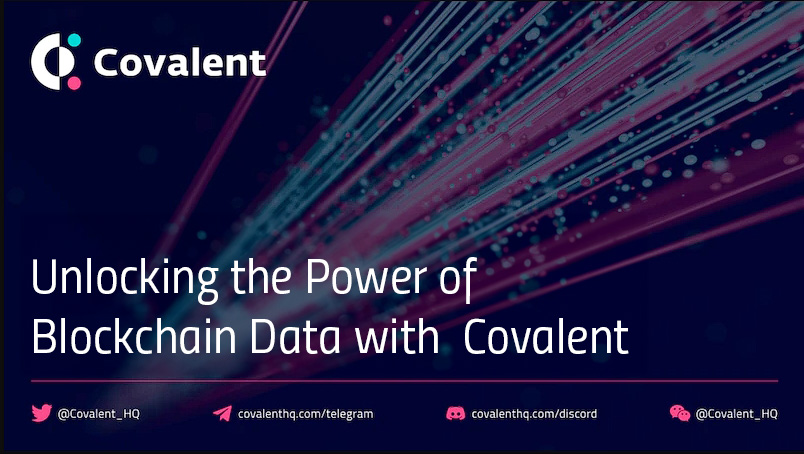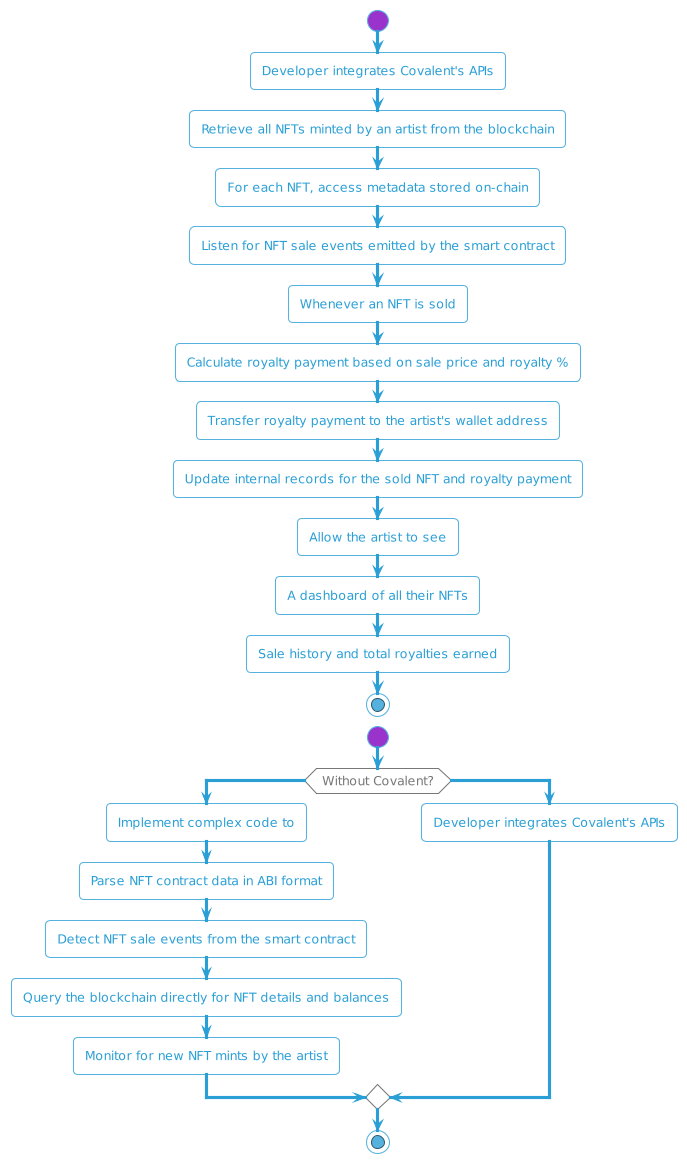Unlocking the Power of Blockchain Data with Covalent

Introduction:
Blockchain data is fragmented, messy, and hard to access. Developing applications in Web3 can feel like navigating a maze blindfolded. But one company aims to change that - introducing Covalent.
Covalent provides a unified API to streamline access to blockchain data across multiple networks. Their mission is to empower developers by building the richest and most robust data infrastructure for the entire blockchain ecosystem.
In this post, we'll explore Covalent's products, solutions and the CQT Network powering it all. Let's dive in!
The Covalent Unified API
delivers fast, scalable historical blockchain data across 100+ chains. The API uses consistent structured schemas across all networks so developers can easily switch between chains with minimal code changes. Key benefits include:
- Speed - Fast response times to support smooth UX.
- Scale - Built to handle heavy traffic and data demands.
- Standardization - Human-readable decoded transaction data.
This simplifies development and reduces the complexity of building Web3 applications.
Data Coverage and Supported Blockchains
Covalent supports dozens of networks including Ethereum, BNB Chain, Polygon, Avalanche, Fantom, and Arbitrum. Their blockchain data coverage is the most extensive in the industry. Some of the data available through the API includes:
- Token balances.
- NFT metadata.
- Historical transactions.
- Token approvals.
- Uniswap v3 pools.
- And much more!
Having this data readily available speeds up development tremendously.
Enterprise-Grade Solutions
In addition to the unified API, Covalent provides robust enterprise solutions like:
- Data caching/no single point of failure.
- Dedicated support and SLAs.
- Usage-based pricing model.
- Scalability as needed.
For teams building mission-critical applications, Covalent has the reliability and support needed for long-term success.
The CQT Network
Underpinning it all is the CQT Network - providing decentralized data availability and security. It allows Covalent to make historical blockchain data accessible through cryptographic proofs.
CQT token holders can stake tokens to participate in the network. In return, stakers earn rewards and governance rights. The network aligns incentives between stakeholders to grow an open, transparent, and decentralized data ecosystem.
Empowering the Future
Covalent is committed to pushing Web3 forward by tackling one of its biggest challenges - data accessibility. Their solutions pave the way for developers worldwide to innovate and build, thereby accelerating mainstream adoption.
With Covalent, the possibilities are endless. The unified API makes blockchain data usable at last. We look forward to seeing the groundbreaking applications that will emerge as a result.
This is an example of how Covalent's token data can be used?
Here's an example of how Covalent's token data could be used:
Example: NFT Royalty Payments and Tracking.
The developer of an NFT marketplace can integrate Covalent's APIs to:
Retrieve all NFTs minted by an artist from the blockchain.
For each NFT, access the metadata stored on-chain including:
- NFT details (name,description, image URL).
- Royalty fee percentage specified by the artist.
Listen for NFT sale events emitted by the smart contract
Whenever an NFT is sold:
- Calculate the royalty payment amount based on sale price and royalty %.
- Transfer the royalty payment to the artist's wallet address.
- Update internal records marking the NFT as having been sold and. royalty paid.
Allow the artist to see:
- A dashboard of all their NFTs.
- Sale history and total royalties earned.
Without Covalent, the marketplace would need to implement complex code to:
- Parse NFT contract data in the ABI format.
- Detect NFT sale events from the smart contract.
- Query the blockchain directly for NFT details and balances.
- Monitor for new NFT mints by the artist.

By using Covalent's APIs, the marketplace can build royalty payment and tracking features more easily and cost-effectively, allowing it to offer better tools for NFT artists.
Hope this example helps convey how Covalent's token data APIs can enable new functionality for dApps!
writen by :
jordialter
